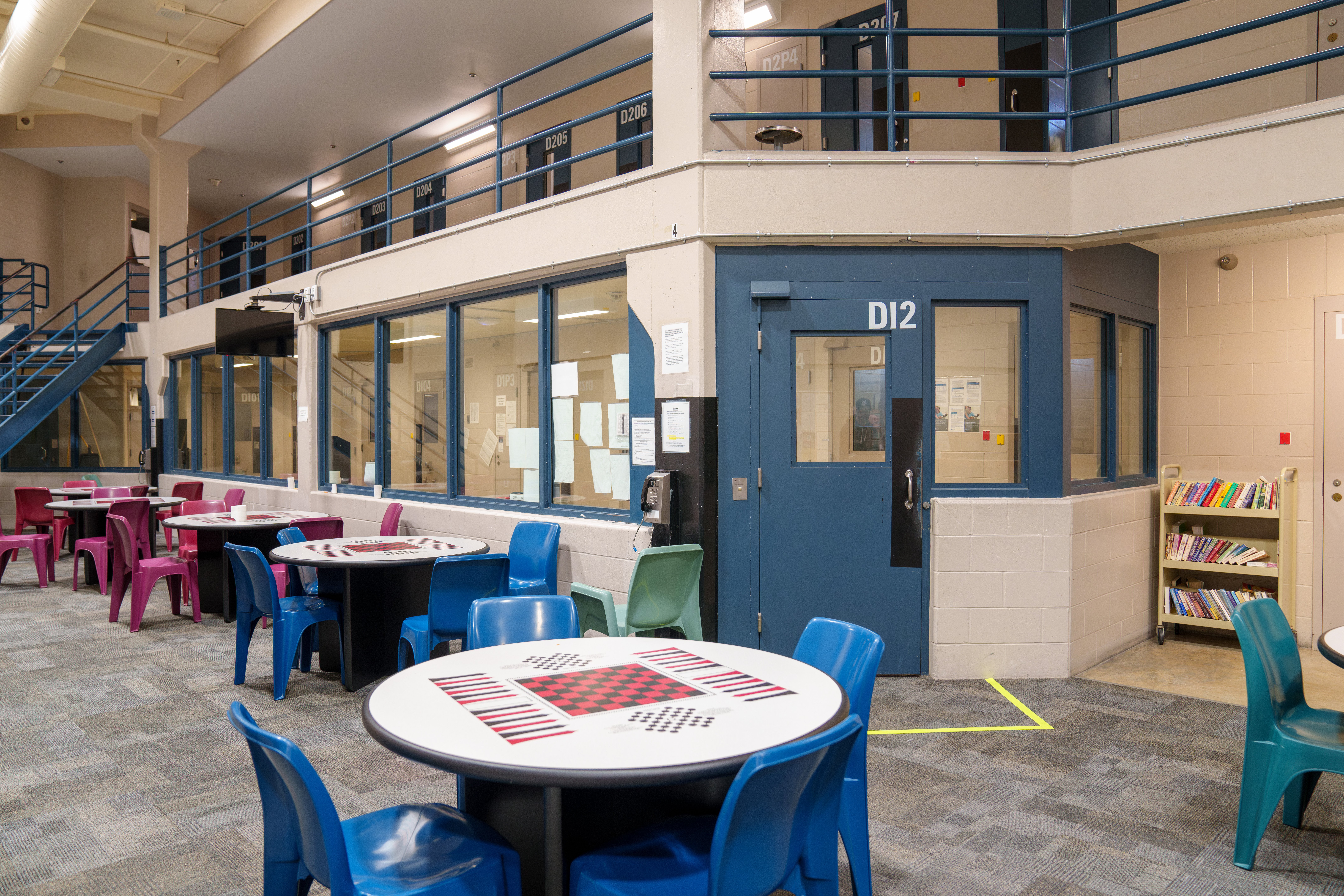Active RFID inmate tracking systems have been marketed to correctional facilities for over 25 years as a means to monitor inmates' movements, enhance security, and improve operational efficiency. Yet, you can likely count on one hand the number of jails and prisons that publicly attest to using it. The number of jails and prisons that chose to pilot an active RFID system over the last several decades—only to cancel it within five years—is well documented.
Why?
Active RFID inmate tracking systems have a pattern of failing or encountering significant issues such as having high complexity for setup, high initial capital outlays, and high ongoing costs and expenses to maintain.
In this blog, we’re going to cover the following:
- The history of active RFID inmate tracking systems
- The primary concerns jails and prisons have about active RFID
- The cost of setting up and maintaining an active RFID inmate tracking system
What are Active RFID Inmate Tracking Systems Historically Known For?
One of the first companies to commercialize active RFID inmate tracking systems was TSI. Based in Scottsdale, Arizona, TSI was founded in 1994 and acquired the underlying active RFID technology from Motorola, which was originally developed to track soldiers on the battlefield. After military budget cuts in the late 1980s, Motorola sought alternative markets for the technology and eventually sold its patents to TSI.
In 2002, Alanco Technologies acquired TSI, and in 2010, Black Creek acquired the active RFID inmate tracking assets through an Asset Purchase Agreement. During this period, many other companies and startups, such as Elmo-Tech, 3M, and others, introduced similar competing technologies. However, none seemed to resonate with the corrections market.
3M shifted its focus to community corrections and offender monitoring solutions, but when it came to tracking inmates with active RFID inside correctional facilities, nearly every public project failed. Technology companies attempting inmate tracking projects, including those in Minnesota, Michigan, and the Los Angeles Sheriff’s Department’s pilot at Pitchess Detention Center, faced significant challenges.
What are the Primary Concerns About Active RFID?
The failure of these public active RFID inmate tracking system projects can be attributed to a variety of challenges and issues associated with the technology, which led many to become wary of adopting it. There are eight main concerns surrounding active RFID, including:
- Signal Interference and Coverage Issues
- Tag Failures and Battery Issues
- Software or Integration Failures
- Tag Tampering or Removal
- High Cost of Maintenance
- Data Overload and Management Issues
- Environmental Factors (e.g., Extreme Weather or Interference)
- Lack of Proper Staff Training
A common issue with active RFID inmate tracking systems is that they rely on wireless signals to track tags worn by inmates. However, various factors can disrupt these signals, including physical obstructions, walls, metal structures, and interference from other electronic devices. In correctional facilities with multiple floors or densely packed rooms, the RFID tags may struggle to communicate with readers effectively due to interference from thick concrete walls or metal doors.
For example, an Arizona correctional facility faced issues with RFID signals being blocked by metal objects and concrete walls, leading to inaccurate inmate location data or complete failure in certain areas of the prison. This resulted in blind spots where the system could not track inmates, creating security risks and challenges for staff.
2. Tag Failures and Battery Issues
Active RFID tags are battery-powered, and if the batteries are not replaced on time, the tags will stop functioning, resulting in a loss of tracking capability for those inmates. In a Mississippi prison, it was reported that some active RFID tags failed due to battery depletion, and the battery replacement process was neither timely nor well-managed.
This caused tracking gaps, where certain inmates were not monitored properly, potentially enabling them to engage in unauthorized activities. The failure to replace or maintain RFID tags created significant security vulnerabilities, including the risk of inmates being unaccounted for during lockdowns or roll calls.
3. Software or Integration Failures
Active RFID inmate tracking systems often rely on sophisticated software platforms to process and display location data in real time. If there are issues with the software—such as bugs, misconfigurations, or problems with integration with other systems (e.g., surveillance cameras or facility management software)—the effectiveness of the RFID system can be compromised.
In one California prison, an incident occurred where the tracking software failed to integrate properly with the facility's internal surveillance system. While inmates’ movements were tracked using RFID tags, the data wasn’t syncing correctly with the video surveillance system.
This led to delayed responses and difficulties in confirming the locations of inmates. The system mismatch resulted in slower, less accurate emergency responses and weakened the ability to correlate RFID tracking data with video surveillance for security verification.
4. Tag Tampering or Removal
Inmates may tamper with or remove their RFID tags in an attempt to evade detection. While active RFID systems are designed to alert authorities when tags are tampered with, some inmates still manage to manipulate the system.
At a New Jersey correctional facility, inmates were able to tamper with their RFID tags by cutting them off or hiding them inside their clothing. In one instance, inmates successfully avoided detection by removing their RFID tags, bypassing security measures. This breach of the tracking system posed significant security risks, allowing inmates to roam freely or engage in unauthorized activities without being detected.
5. High Cost of Maintenance
Active RFID inmate tracking systems can be extremely expensive to maintain over time due to ongoing costs such as battery replacements, hardware maintenance, software updates, and system repairs. Some facilities have found that the long-term costs of maintaining the system outweigh the benefits, especially when technical failures occur or resources for upkeep are limited.
A South Carolina prison, for example, faced significant budget overruns related to its RFID system. The system required continuous battery replacements and frequent repairs for malfunctioning readers and tags. The cost of maintaining the RFID infrastructure exceeded the facility's budget, making it difficult to sustain the system effectively. Budget constraints led to a decline in the system's effectiveness, and the facility had to reassess its investment in RFID tracking due to the high costs of ownership and maintenance.
6. Data Overload and Management Issues
Active RFID inmate tracking systems generate large amounts of data related to inmate movements and locations. If this data is not properly managed, it can become overwhelming for staff to monitor and respond effectively.
In one incident at a Florida correctional facility, the active RFID system generated so much data that it became difficult for staff to identify relevant information in real time. The sheer volume of location data led to information overload, making it more difficult for staff to distinguish between normal behavior and potential security risks.
A 2010 report by the RAND Corporation issued a warning about such circumstances: “If the system has a number of false alerts or stops functioning, it could undermine the staff’s confidence in the system and affect their willingness to rely on it.”
This data overload resulted in delayed responses and difficulties in identifying critical information, increasing the risks of security breaches, escapes, and incidents going unnoticed for too long.
7. Environmental Factors (e.g., Extreme Weather or Interference)
Correctional facilities in regions with extreme weather conditions (e.g., heavy rain, high humidity, extreme heat) may face issues with RFID tags or readers as these systems rely on electronics that can be affected by harsh environments.
For example, at a Texas prison, inmates’ RFID tags began malfunctioning due to extreme heat. The high temperatures caused the battery life of the tags to deplete faster than expected, leading to a higher failure rate during the summer months. These malfunctioning tags created gaps in inmate tracking, making it difficult for staff to reliably monitor inmates during critical periods, which increased the risk of escapes or misconduct.
8. Lack of Proper Staff Training
Active RFID systems require proper training for correctional officers and staff to ensure they can effectively use the system, respond to alerts, and troubleshoot when necessary. Inadequate training can result in improper use, system failures, or missed opportunities for intervention.
At an Oregon correctional facility, a lack of proper training led to staff failing to respond to alerts generated by the RFID system. Inmates who were not where they were supposed to be were not flagged in a timely manner, and officers failed to follow up on missing alerts. Delayed responses to security threats and the inability to detect discrepancies in inmate movements in real time increased security risks and operational inefficiencies.
What Does it Take to Set Up and Maintain an Active RFID Inmate Tracking System?
The initial costs of a long-range active RFID inmate tracking system can vary significantly based on several factors, such as the scale of deployment, system complexity, the brand, features of the RFID tags and readers, and the specific use case. Active RFID systems are generally much more expensive than passive RFID systems due to the inclusion of their own power source (usually a battery) and more advanced electronics. This can lead to a substantial upfront cost for jails and prisons deploying a large-scale system.
Here are some costs associated with the set up and maintenance of an active RFID inmate tracking system to consider:
1. Active RFID Tags
Active RFID tags are generally more expensive than passive tags due to the inclusion of a battery and internal circuitry that supports longer-range communication (typically up to 300 meters or more).The cost of active RFID tags typically ranges from $20 to $100 per tag, depending on factors such as range, features (e.g., accelerometers, heart rate sensors, etc.), and the manufacturer. Specialized tags, such as those with added sensors or ruggedized for harsh environments, may cost upwards of $200 or more per tag.
Since active RFID tags are battery-powered, their batteries will eventually need to be replaced, resulting in ongoing operational costs. The battery life typically lasts between two to five years, depending on the tag and usage. Once the battery dies, the tag becomes ineffective unless replaced. Depending on the scale of the system, frequent battery replacements can present logistical challenges and be costly.
2. RFID Readers (Fixed)
Fixed readers are installed at strategic locations (e.g., entry/exit points, medical areas, recreation zones, booking areas, etc.) to scan and read signals from RFID tags. These readers typically have a greater read range and can support simultaneous scanning of multiple tags.
The cost of a typical fixed RFID reader ranges from $500 to $5,000 or more, depending on factors such as range, capabilities (e.g., multi-tag scanning, ruggedization for outdoor use), and the manufacturer.
3. Antennas
Fixed antennas are essential for extending the range of RFID readers. Depending on the environment, multiple antennas may be required to cover larger areas or specific zones. The cost of these antennas typically ranges from $200 to $1,500 per unit, depending on factors such as range, durability, and compatibility with the readers.
4. Network Infrastructure
In some cases, if the Active RFID inmate tracking system needs to operate across multiple sites or requires real-time tracking, additional network infrastructure may be necessary, such as gateways, servers, or cloud storage.
The cost for this infrastructure can range from $5,000 to $50,000, depending on the scale of the network and whether a cloud-based or on-premises solution is required.
5. Software and Integration
To manage the entire Active RFID inmate tracking system, including data collection, tracking, and integration with existing enterprise systems (such as your jail or offender management system), you will need to consider the following:
- Enterprise Systems Integration: The initial license and setup costs for integration can range from $50,000 to over $1,000,000.
- Annual Licensing Fees: Ongoing maintenance, support, and updates typically incur annual fees ranging from $50,000 to $500,000.
6. Installation and Setup Costs
The cost of installing fixed readers, antennas, and other hardware can be substantial, especially if the system requires custom configurations or modifications to existing infrastructure. Installation costs vary based on the size and complexity of the system. On average, for larger systems, installation can add over $100,000, which includes expenses for labor, wiring, and hardware setup.
7. Training and Support
Training employees to use and maintain the RFID system can also contribute to the initial costs, especially if the system is complex or involves multiple types of equipment. Training costs typically range from $5,000 to $30,000, depending on the number of employees and the depth of training required.
Some vendors offer setup and ongoing technical support as part of the package, while others charge separately for these services. Support contracts for larger systems may range from $10,000 to $250,000 per year.
While active RFID inmate tracking systems can offer significant benefits, including enhanced security, real-time tracking, and operational efficiencies, there are several potential pitfalls to consider. Failures can arise from technical issues, tag tampering, data overload, and maintenance challenges. These failures can compromise security, increase operational costs, and create additional risks for both inmates and staff.
Before investing in an active RFID inmate tracking system, correctional administrators must evaluate the following items:
- Does the technology truly enhance your staff’s performance, or are you offloading a principal responsibility (safety and security monitoring) to a technology that may have a questionable track record?
- How will a wearable technology that needs frequent replacement (due to limited battery life or tampering) impact your staff’s performance?
- How can active RFID inmate tracking improve compliance with jail standards or enhance your accreditation with organizations such as ACA?
Ultimately, inmate tracking solutions should align with the facility’s operational goals, security requirements, and budget constraints. Active RFID may not be the best fit for every correctional environment, and exploring alternative teaching methods, such as passive RFID or other AI-powered surveillance, may provide more reliable and cost-effective results in the long term.




